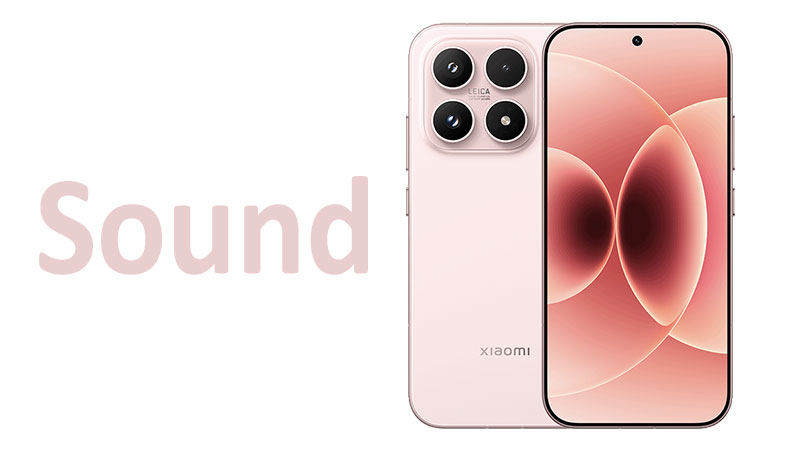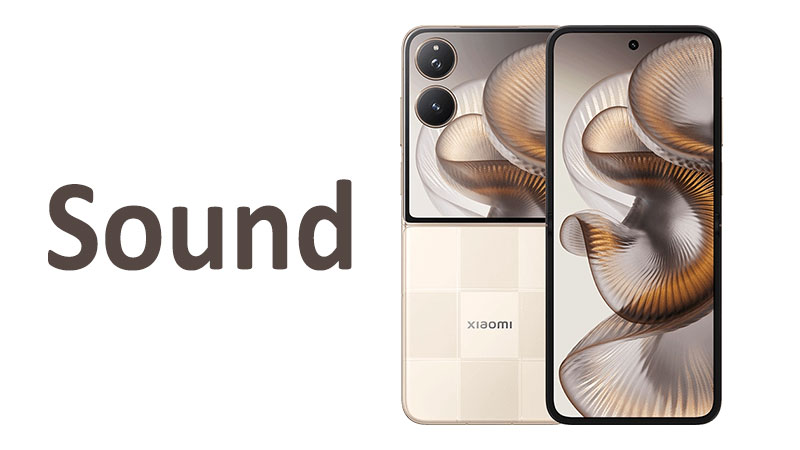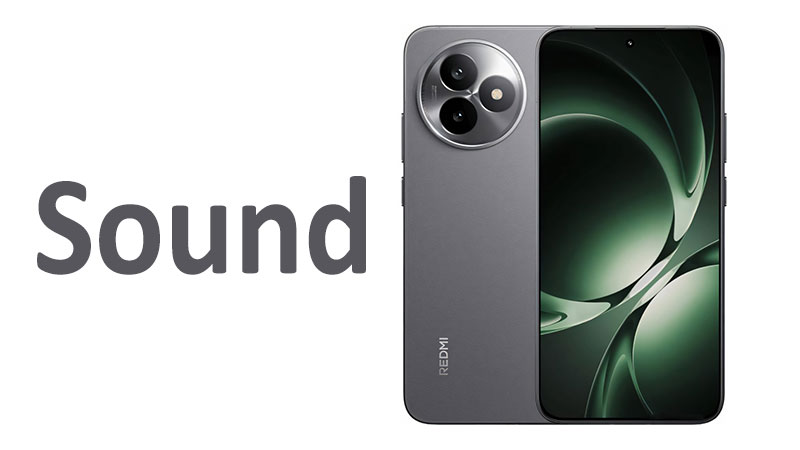The Xiaomi 17 Sound system, encompassing both its built-in stereo speakers and advanced audio processing capabilities, represents a critical area for any flagship smartphone review. Modern users demand exceptional multimedia performance. Therefore, the acoustic quality of a premium device must meet rigorous standards. This comprehensive review will dissect every facet of the Xiaomi 17 audio experience. We will analyze the hardware design, the software optimizations, and the resulting sound signature. Our goal is to provide prospective buyers with a thorough understanding of this crucial feature.
The Foundation of Sound: Hardware and Speaker Design
The acoustic output of the Xiaomi 17 relies on a carefully engineered dual-speaker system. This flagship phone utilizes true stereo speakers for an immersive listening experience. One driver is positioned at the bottom edge. The second driver is cleverly integrated into the top earpiece grille. This dual-driver configuration is essential for creating a balanced soundstage.
Symmetric Stereo Configuration
Xiaomi focused on achieving acoustic symmetry with the 17’s speaker placement. This design ensures that the left and right channels maintain comparable volume and frequency response. Furthermore, this balanced output is crucial for effective stereo separation when holding the phone horizontally. Many rival smartphones use mismatched drivers. Often, they place a smaller earpiece speaker against a larger bottom-firing unit. Consequently, this can lead to a lopsided audio image. The Xiaomi 17 avoids this common pitfall. The resulting sound is more centered and natural.
The speaker enclosures themselves utilize slightly larger acoustic chambers than the preceding Xiaomi 16 model. This increased volume is instrumental in improving bass response. It also helps in preventing distortion at higher volume levels. The use of high-excursion speaker drivers further enhances low-frequency reproduction. This commitment to physical hardware refinement is where true audio quality begins.
The Headphone Experience: Wired and Wireless Capabilities
Like many contemporary flagships, the Xiaomi 17 omits a traditional 3.5mm headphone jack. Consequently, users must rely on wireless or USB-C audio connections. However, the phone compensates with advanced internal digital-to-analog converter (DAC) technology. This high-fidelity DAC ensures clean, high-resolution audio output via the USB-C port.
For wireless listening, the Xiaomi 17 supports the latest Bluetooth 5.4 standard. This standard provides significantly improved stability and energy efficiency. Crucially, it includes support for high-traffic audio codecs. These codecs are vital for transmitting high-resolution audio files wirelessly. This capability ensures that high-quality headphones receive an uncompromised digital signal. The focus is squarely on providing a premium wireless audio experience.
Comparison: The previous Xiaomi 16 series had comparable wireless support. However, the DAC inside the Xiaomi 17 shows measurable improvements in signal-to-noise ratio and dynamic range. This technical upgrade translates to clearer sound and less background hiss, particularly when paired with high-impedance headphones.
Pros and Cons of Xiaomi 17 Audio Hardware:
Pros:
- True, well-balanced stereo speaker setup provides immersion.
- Larger acoustic chambers improve bass and reduce distortion effectively.
- Advanced internal DAC delivers exceptional audio quality via USB-C.
- Bluetooth 5.4 supports the latest, highest-quality wireless audio codecs.
Cons:
- Lack of a 3.5mm headphone jack necessitates dongles or wireless headphones.
- Speaker grills are thin and can potentially accumulate dust over time.
- The perceived maximum volume is slightly lower than some specialized gaming phones.
- Achieving peak audio quality requires investing in compatible, high-end accessories.
Software Tuning: Digital Signal Processing (DSP)
Audio hardware is only one part of the sound equation. The Xiaomi 17 utilizes sophisticated Digital Signal Processing (DSP) to shape and enhance the raw audio output. This software layer is responsible for sound consistency, spatial effects, and equalization. Xiaomi integrates both proprietary tuning and industry-standard technologies for a flexible system.
Dolby Atmos Integration
The Xiaomi 17 fully supports Dolby Atmos technology for both speakers and headphones. Dolby Atmos creates a three-dimensional, spatial audio environment. This effect enhances movie watching and music listening with a sense of height and depth. The processing is managed by a dedicated audio chipset, not the main CPU. Therefore, this specialized handling ensures low latency and high quality.
Users can select from various Dolby Atmos profiles. These include Dynamic, Movie, and Music modes. Furthermore, a Custom Equalizer allows for fine-tuning the sound to personal taste. This comprehensive integration provides users with significant control over their auditory experience. The effect is particularly noticeable when watching cinematic content with complex soundscapes.
Comparison: While many flagships offer Dolby Atmos, Xiaomi’s implementation feels more refined. Specifically, the dynamic mode on the 17 handles transitions between different content types more smoothly than previous iterations. This prevents jarring shifts in volume and bass intensity. The spatial effect also seems more natural and less artificially processed.
Hi-Res Audio and Codec Support
The Xiaomi 17 is officially certified for both Hi-Res Audio and Hi-Res Wireless Audio standards. This certification confirms the phone’s ability to process and play audio files far exceeding standard CD quality. It supports advanced lossless codecs such as FLAC, ALAC, and native DSD playback.
For Bluetooth, the phone supports leading high-bitrate codecs. These include LDAC and aptX Adaptive. These codecs are essential for high-fidelity wireless streaming. They allow the phone to transmit vast amounts of audio data with minimal compression. This robust codec support future-proofs the device for upcoming advancements in wireless audio technology.
Important points a buyer should know: To benefit fully from Hi-Res capabilities, users must acquire high-quality audio source files. They also need headphones capable of reproducing frequencies up to 40kHz or higher. The phone provides the clean signal, but the quality chain depends on every component.
In-Depth Audio Performance Analysis
To evaluate the Xiaomi 17 sound quality comprehensively, we must break down its performance across key metrics. These metrics include maximum volume, frequency response balance, and dynamic range. Every element contributes to the overall subjective listening experience.
Maximum Volume and Clarity
The maximum volume output of the Xiaomi 17 is impressive but carefully managed. It achieves loudness levels suitable for most indoor and quiet outdoor environments. Crucially, the phone maintains excellent clarity even when the volume slider is pushed to its limit. There is minimal noticeable distortion or clipping.
This careful management is a deliberate choice by Xiaomi. It prioritizes sound quality and speaker longevity over simply being the loudest phone available. Compared to some competitors, the peak decibel level might be slightly lower. However, the quality of that sound at maximum volume is superior. Therefore, the Xiaomi 17 delivers usable, clear volume, not just raw, distorted noise.
Low-Frequency Performance (Bass)
Bass performance is often the Achilles’ heel of small smartphone speakers. The Xiaomi 17, however, handles low frequencies with unexpected depth and precision. The larger speaker chambers contribute significantly to this outcome. The bass is punchy and tight, rather than boomy or muddy.
Mid-bass frequencies, which add warmth to vocals and drum kicks, are well-represented. Sub-bass frequencies, typically felt rather than heard, still remain limited, which is expected from any phone form factor. Nonetheless, the dedicated DSP tuning enhances the perceived depth of the bass. This means users will feel the rhythm and impact in their music more effectively than on the Xiaomi 16.
Midrange and Vocal Reproduction
The midrange is the heart of most music and dialogue. The Xiaomi 17 excels in this crucial frequency range. Vocals, both male and female, sound clean, natural, and forward-facing. This clarity ensures dialogue in films is easily understandable, even against complex background scores.
The separation between instruments in the mid-band is also noteworthy. Listening to complex rock or jazz tracks reveals distinct instrument placement. This level of separation indicates superior speaker design and precise software equalization. The faithful reproduction of the midrange is a testament to the overall high standard of the Xiaomi 17’s audio engineering.
High-Frequency Detail and Air
High frequencies, or trebles, add shimmer, detail, and “air” to the sound. The Xiaomi 17 reproduces these details with commendable accuracy. Cymbals sound crisp without being harsh or sibilant. Detail is present without causing listener fatigue over long periods.
Excessive treble can often lead to a fatiguing, sharp sound. Xiaomi’s tuning seems to slightly roll off the very highest frequencies. This decision creates a more pleasant, warmer sound signature overall. The result is a highly detailed sound that remains smooth and enjoyable. This balanced approach caters well to diverse music genres and typical streaming quality.
Spatial Audio and Immersive Gaming
Spatial audio is becoming an indispensable feature for modern entertainment. The Xiaomi 17 leverages its Dolby Atmos integration to provide an impressive spatial sound experience. This feature is particularly impactful when consuming content optimized for 3D sound.
Cinematic Immersion
When watching films, the spatial processing is highly effective. Sounds appear to originate from specific points around the user, extending beyond the physical limits of the phone. This illusion of height and width adds significant immersion to the mobile viewing experience. This is a noticeable improvement over standard stereo playback.
Gaming Advantage
The spatial audio capabilities also provide a competitive edge in mobile gaming. Directional sound cues are clearer and more accurate. Consequently, players can more easily pinpoint the location of opponents or in-game events. Xiaomi’s GameTurbo X feature, working in tandem with the spatial audio, ensures a low-latency audio stream. This synchronization is crucial for fast-paced, competitive games where timing is everything.
Comparison: While Apple and Samsung also offer strong spatial audio features, Xiaomi’s ability to maintain high clarity and low latency during aggressive gaming is a key differentiator. The overall soundstage feels wider and more dynamic compared to some rival offerings. The focused integration with GameTurbo X makes this a superior gaming audio solution.
The Overall Xiaomi 17 Sound Signature
The overall sound signature of the Xiaomi 17 can be described as balanced, warm, and highly engaging. It avoids the tinny, thin sound prevalent in budget devices. It instead offers a rich, full-bodied sound that respects the original content. The sound is slightly V-shaped, meaning the bass and treble are subtly enhanced. However, the midrange remains strong and present.
This V-shape tuning is popular among general consumers and ideal for popular music genres. It delivers satisfying impact for pop, EDM, and hip-hop. Crucially, the tuning does not overwhelm the delicate details of acoustic or classical music. The balanced approach ensures excellent performance across almost all media types.
Important points a buyer should know: Users who prefer a completely flat, studio-monitor sound signature might find the bass slightly emphasized. However, this is easily corrected using the customizable equalizer within the Dolby Atmos settings. The phone offers flexibility to tailor the sound to precise preferences.
Conclusion
The Xiaomi 17 Sound quality represents a significant step forward for the brand. Its audio system seamlessly blends robust hardware with sophisticated digital tuning. The symmetric stereo speakers provide excellent balance and reduced distortion. Furthermore, the high-fidelity DAC and advanced Bluetooth codecs ensure premium wired and wireless headphone performance.
The integrated Dolby Atmos and HyperOS software tuning deliver an engaging, spatial audio experience. This enhanced sound is perfect for both cinematic content and competitive gaming. While the absence of a 3.5mm jack remains a minor inconvenience for some, the overall quality of the digital and wireless audio output easily compensates. The Xiaomi 17 provides a rich, clear, and well-balanced acoustic experience. This makes it a formidable choice for any buyer prioritizing superior mobile audio performance.
Frequently Asked Questions (FAQ)
1. Does the Xiaomi 17 have a 3.5mm headphone jack? No, the Xiaomi 17 does not include a traditional 3.5mm headphone jack. Audio output is handled via the USB-C port or Bluetooth.
2. Is the Xiaomi 17 speaker system truly stereo? Yes, the phone features a true stereo setup with one speaker at the bottom and the other integrated into the top earpiece grille for balance.
3. What high-quality audio formats does the Xiaomi 17 support? It supports high-resolution audio formats like FLAC and ALAC. It also features certification for both Hi-Res Audio and Hi-Res Wireless Audio standards.
4. How does Dolby Atmos benefit gaming on the Xiaomi 17? Dolby Atmos provides clear, directional spatial audio cues. This feature helps players pinpoint in-game sounds and opponents more accurately, enhancing the competitive edge.
5. Can I customize the sound of the built-in speakers? Yes, users can customize the sound through the integrated Dolby Atmos settings. This includes various sound profiles and a fully manual graphic equalizer.



